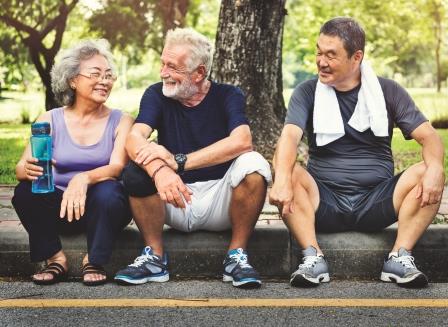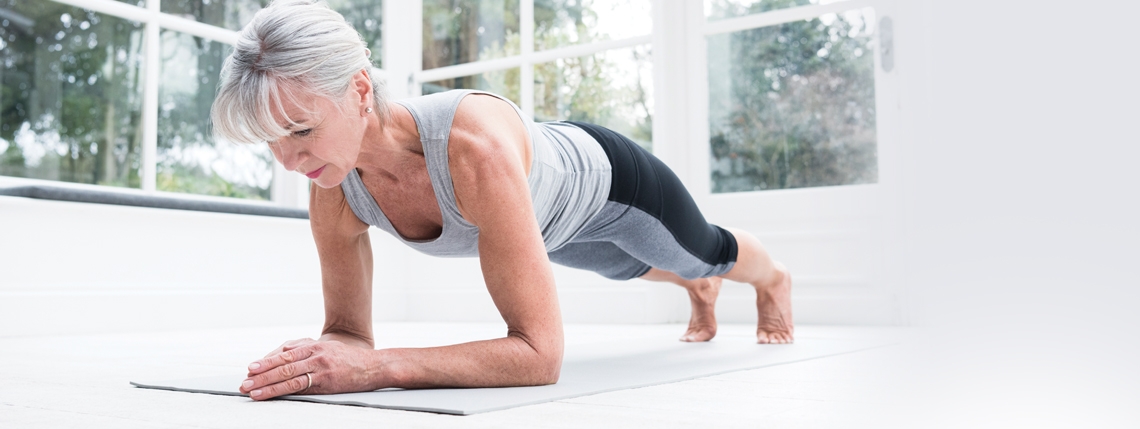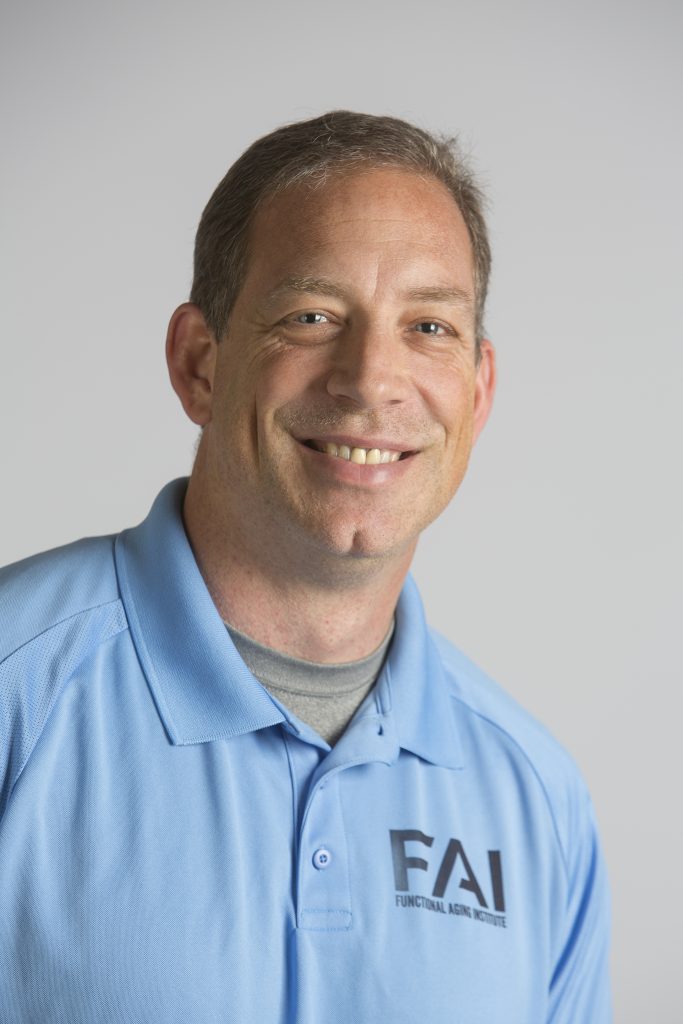Cody Sipe takes a look at recent research on plasticity – the ability of the organism to continue to adapt to its environment (aka lifestyle behaviours).
What does an 80 or even 90-year-old look like? Wrinkled, dysfunctional, unhealthy, incontinent, senile and inactive? Or healthy, vigorous, strong, active, energetic, adventurous and intelligent? Could they be a gymnast like Johanna Quaas? A bodybuilder like Ernestine Shepherd? Could they barefoot waterski like Banana George? As a society, we have vastly underestimated our ageing potential. This may have contributed to an ageist perspective and many stereotypes that persist, even in the fitness industry. As trainers, it is vital that we have an accurate perspective of ageing so that we can train clients to reach their true potential, instead of our self-limiting beliefs about what they can or cannot do.

Physiological plasticity
Sarcopenia refers to the age-associated loss of muscle mass, while dynapenia refers to the age-associated loss of muscle function (strength, contractile velocity, etc.). The average person will lose about 30% of their muscle mass from the age of 30 to 70, although there is a huge degree of variability between individuals1. With ageing, muscle power declines earlier and more precipitously than strength (since contractile velocity is also declining). Strength and power contribute significantly to the functional abilities of an older adult (although power is more important). In the early 1990s, several landmark studies2,3 were published demonstrating that resistance exercise can significantly, and dramatically, increase strength and muscle mass in those in their 80s and 90s. Since then, hundreds of studies have come to the same conclusion. More recently, numerous research studies and systematic reviews4,5 have also concluded that power training can improve muscle power into late adulthood. Even more, the evidence6 clearly shows that virtually every physiological factor can be improved if they are trained adequately
Seniors can improve their flexibility by stretching; or their cardiorespiratory fitness through aerobics; or even balance through balance training. There is no evidence that there is an age limit on the ability to adapt to training.
Neuroplasticity
Dementia is one of, if not THE greatest concern among older adults, and with the prevalence of Alzheimer’s disease on the rise, it is a valid one. It is anticipated that the worldwide cases of Alzheimer’s disease will increase from 46.8 million in 2015 to 131.5 million in 20507. Whenever I speak to senior groups, they overwhelmingly tell me that they would rather die than spend 5-10 years not recognising their loved ones and having to be taken care of. This fear has helped create a global business sector centered on brain training apps, software, games … even Sudoku and crossword puzzles. It is also a common belief that brain function naturally declines with ageing, so that dementia is really an inevitable result. In the book Successful Aging, researchers Rowe and Kahn call this myth: “The lights are on but the voltage is low.” Senility, confusion, memory loss, ‘senior moments’ and worse are just a normal part of growing older, right? Maybe not. The research8-11 overwhelmingly suggests that cognitive function in old age is primarily due to lifestyle factors, rather than the ageing process. Nutrition, stress, environment, physical activity and relationships can all have an impact on cognition as we get older. Although some individuals will suffer from memory loss or even develop dementia, they are not normal parts of the ageing process. Many older adults remain mentally sharp throughout their whole life. Exercise is one of the best ways to improve cognitive function and is probably better than playing any of the brain games that have become so popular.
Several recent systematic reviews8-11 have made the following conclusions:
- Cardiovascular and resistance exercise improves executive function the most (strategic planning, mental flexibility, inhibitory control, problem solving and working memory)
- Cardiovascular exercise of sufficient intensity and frequency can significantly elevate Brain Derived Neurotrophic Factor (BDNF)
- Resistance exercise stimulates the production of Immuno-Globulin Factor 1 (IGF1)
- Cardiovascular and resistance exercise have a synergistic effect on brain function likely due to stimulating the brain via different pathways (BDNF and IGF1) and maximising neurogenesis, synaptogenesis and angiogenesis
- Brain games can improve the functions of the brain used during training but there is no carryover effect to other cognitive functions
- The ‘sweet spot’ seems to be activities that combine physical exertion with mental challenges such as learning a new sport
Functional plasticity
The relationship between primary ageing (biological ageing) and secondary ageing (due to lifestyle) is most apparent in studies of masters’ athletes. These individuals are physiologically and functionally 20-30 years younger than their less active peers. Not only are they able to perform at their respective sports at a high level, but they have less chronic health conditions and lower rates of functional impairments and disability. Longitudinal studies on ageing consistently identify lifestyle as having much more of an impact on how well a person ages and how long they live, than the ageing process itself.
Training takeaways
Don’t underestimate the possibilities of your older clients
This means training them robustly and intensely enough to create a progressive overload. When appropriate, you can forget the slow, easy, safe exercise programmes that have been stereotypically used with seniors. Just like with any other population, the training stimulus must be sufficient to produce gains; older adults are no different.
Train older adults using diverse methods
Follow the Functional Aging Training Model to ensure that you cover the primary domains that are critical to functioning well: cognitive/ emotional; neuromuscular; musculoskeletal; mobility; cardiorespiratory; and balance.
Embody a positive ageing paradigm
If you want to attract and train older clients effectively, it is critical to believe wholeheartedly that your clients can and will get significantly better with training. This means they will be able to do the stuff they need to do, like to do and want to do, easier and better. And it is important that you communicate that belief with your current and potential clients (because they may not believe it). Older adults can be an incredibly rewarding group to work with; the results they get with training make such a positive impact on their daily lives. They regain their abilities to do all the things they love to do that are important to them – play with grandchildren, explore the world, work, volunteer, take care of themselves. The typical older adult can achieve a much higher level of physical function than they currently enjoy if they make the right lifestyle choices that include regular exercise (tailored to their individual needs). Your clients can almost literally turn back the clock physiologically, cognitively and functionally.
For references visit fitpro.com/references
Where next? Watch our video on 5 things that fitness professionals might need to know about physical activity and ageing from Professor Stephen Harridge HERE








